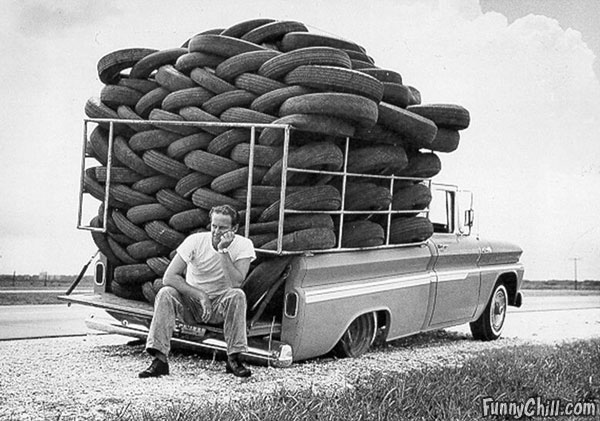
The expression "Where the rubber meets the road" refers to the most important part of something, where all of the critical things happen. Taken literally, your tires are what connects your car to the road, but are frequently neglected. The right tire can make the difference between a quite and loud drive, a safe or dangerous drive and unfortunately, even life and death.
So how can you decide what the right tire for you is? Here's a step-by-step guide that will explain everything you need to know about tires as a consumer.
Sizing - First things first. You need to know what the size of your tires are. The easiest way to do this is to refer to your vehicle owner's manual or to look on your tire's sidewall. The sidewall is the the part of the tire that will be facing you. If you read the text on the sidewall you will see the name of the tire brand, the model and most importantly you will see a set of numbers that will look like this:
P215/65R15
These numbers are an indicator of the size, type and performance of the tire.Let's break down what each of these numbers and letters mean:
The first letter, in this case P, refers to the tire type. P stands for a passenger vehicle.
The first three digit numbers indicate the tire width as measured in millimeters from sidewall to sidewall. In this case, the tire width would be 215.
The numbers after the first slash are the tire's aspect ratio. This is the ratio of the height of the tire's cross-section to its width. In this case, the aspect ratio would be 65, or that the height of the tire is equal to 65% of the tire's width.
The letter after the aspect ratio refers to the tire's construction. In this case the R stands for radial, indicating that the layers run radially across the tire.
Lastly is the wheel diameter. This is the size of the wheel from one end to the other, the same way you would measure a pizza, but less delicious. It tells you what size tire is needed to fit the wheel, in this case a tire made for a wheel with a 15" diameter. Not quite "dubbs."
Keep in mind that in some vehicles, the tire size may be different between the front and rear wheels. These are called "staggered" wheels and are common in sports cars with rear wheel drive where the rear wheels are bigger than the front.
Types of tires - Now that you understand your tire sizes, it's time to decide what type of tires you need.
There are different types of tires for different conditions so you need to analyze the type of driving you do and the environment in which you do it.
All-season - All season tires are designed to handle a variety of road conditions; dry, wet and even light snow. They are essentially a year-round tire, and great if you're expecting to deal with diverse conditions. These are the type of tires that will come on most new cars and will last quite a long time before needing to be replaced.
Summer- Summer tires are also called high-performance tires and are better for performance driving. However, they're made from a softer rubber and will wear out faster than all-season tires. They are also more expensive than all-season tires.
Winter - Winter tires are designed for use on ice and snow and specifically in lower temperatures. The tread on winter tires is designed to handle the conditions expected in a winter environment. Winter tires start to perform better than all-season tires at temperatures below 45 degrees Fahrenheit. Winter tires are a must in snowy climates and can make all of the difference between a safe drive and sliding out of control. However, winter tires need to be swapped out in the warmer months as driving on them year round can cause them to wear very quickly.
Now that you understand the tire basics, how do you know which tires are right for you?
There will be some obvious considerations when making your decision such as price, but let's instead focus on need. You'll need to identify what kind of driving you're primarily expecting to do and what type of climate you can expect the tires to endure.
If you live in a climate where you experience all four seasons, an all-season tire would be most appropriate. If you experience heavy winters, you may even consider a set of snow tires to get you through the winter doldrums. However, if you live in a hot, dry climate then summer tires might be perfect for you.
It's important to find a tire shop that you can trust. Use our search feature to find local tire specialists that can help steer you in the right direction. It's important for you to explain to the person from the tire shop exactly what kind of driving you're expecting to do. Explain your price range and then ask the sales rep to provide you with some options. Based on your vehicle, price range, driving behaviors and local climate, you should be able to narrow it down to a few tires.
A few other factors to consider.
Ride Quality - a lower profile tire may decrease the ride quality and make bumps more noticeable
Road Noise - different tread patterns may cause more or less noise when driving
Speed rating - unless you're taking your car on the Autobahn, there's no need for a very high speed rating
Wet-weather requirements - if you live in a very rain-heavy state, you'll want to consider a wet-weather capable tire.

